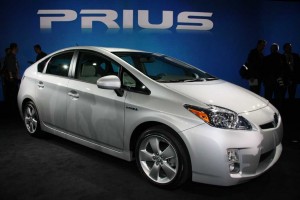The U.S. auto industry should have a reason to celebrate over the upcoming Independence Day holiday; initial data suggest that increased industry discounting set off fireworks for consumers, sending them back to showrooms after May’s unexpected downturn.
But the trendline remains soft compared to the strong market of early 2011, and at least one study of consumer “intensity” suggests that the rebound may not last long, sales potentially slipping again in the months ahead.
June’s apparent upturn suggests that consumers are opening their pocketbooks again now that fuel prices have retreated a bit from an early spring surge. Meanwhile, manufacturers like Toyota have consciously bought momentum by ramping up their incentives. Makers had consciously trimmed back their giveaways over the spring – in large part responding to product shortages created by the March 11 earthquake and tsunami that devastated Japan.
At one point, the vast majority of Japan-based auto assembly operations were idled, a crisis that spread to North America when so-called “transplant” assembly lines ran short of Japanese-made parts and components. After shutting down for a week following the Memorial Day holiday, Toyota has begun expanding production both in the U.S. and back home, as has Toyota, but shortages are likely to persist, Honda saying it won’t have a normal supply of the new 2012 Civic model until sometime in autumn.
So, even with improved production, “Toyota is going to be down 10% compared to last year,” warned analyst Jesse Toprak, of TrueCar.com, while “Honda will be down about 14%.”
Overall, June sales are expected to rise 11.2% year-over-year, projected Edmunds.com, with a 3% gain forecast over May’s weak numbers.
But measured in terms of the Seasonally Adjusted Annual Sales Rate, or SAAR, the outlook is less upbeat. For May, the industry operated at an annualized rate of 11.9 million cars, trucks and crossovers. Edmunds forecasts that will rise to just 11.9 million for June. The SAAR hit its recent peak in February, at 13.3 million, dipping only slightly, to 13.2 million, in April.
“As we anticipated, production issues and price increases have led to sluggish sales over the last couple of months and have made it more likely for consumers to delay their new car purchases through the early part of the summer,” said Edmunds.com Chief Economist Lacey Plache. “But as prices and inventory return closer to normal levels by September, many of those lost sales can be made up by the end of this year when consumers return to the market.”
Of the top-ranked Japanese, analysts predict only Nissan will be in positive territory for June, reflecting its relatively limited dependence on a Japanese production base. The maker is projected to post a 24.5% year-over-year sales gain.
Korean makers Hyundai and Kia are expected to be up 33.9%, according to Edmunds, the largest increase of any major maker. Observers believe the two Asian makers have done the best job of taking advantage of the Japanese product shortages.
Chrysler, with a forecast gain of 26.2%, is likely to top the chart among the Detroit Big Three, Edmunds predicting a 17.1% gain for General Motors and an 11.1% increase at Ford.
While many makers have started increasing incentives to combat sluggish demand, those givebacks are still down sharply compared with earlier in the economic cycle. At an average $2,944 per vehicle, according to TrueCar, Chrysler’s incentive spending was believed to drop below $3,000 for the first time since 2003.
While industry leaders are hoping that momentum rebounds in the months ahead, there are troubling signs from the Dataium Auto Shopper Intensity, or ASI, study, which bills itself a “leading indicator” of sales 60 days out. A downturn in the April study was followed by May’s sales slide.
“May’s ASI decline signals continued weakness in automotive sales for June and August,” the latest study indicates.
The ASI looks at online automotive research and shopping activity, and it did find at least one promising indicator, potential buyers increasing their searches into dealer inventory.

